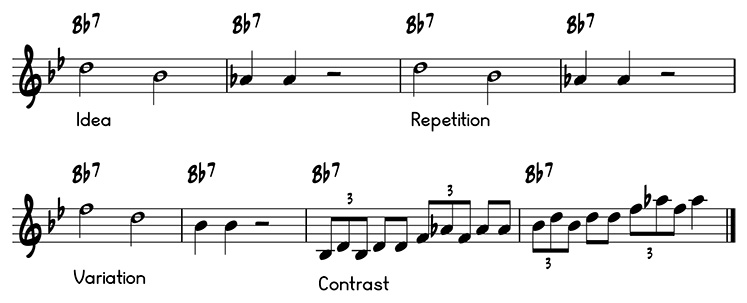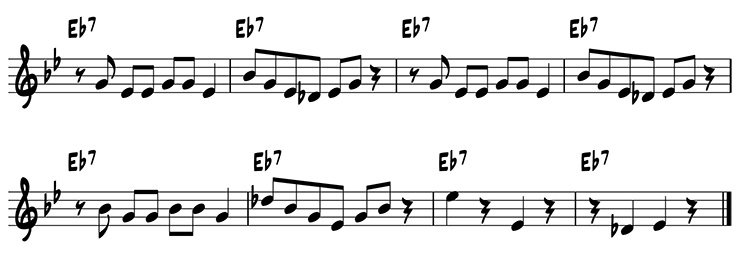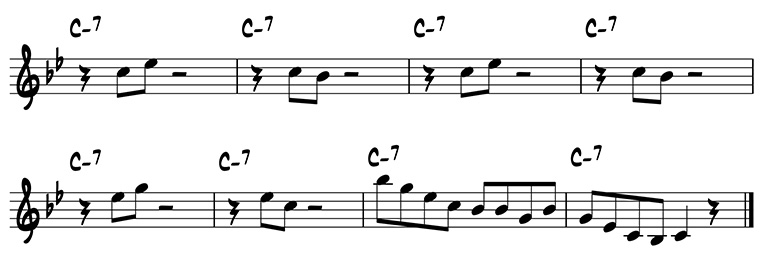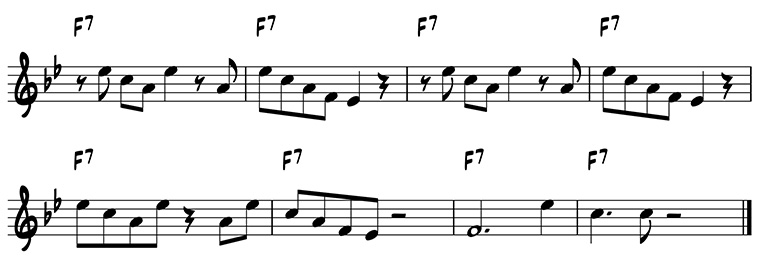Index - Introduction - Lessons
Improvising on Chord Tones
Most of the improvisation lessons up to this point have focused on the elements of rhythm, melody, and form, while limiting the choice of notes to only one or two pitches. This lesson is very similar to Lesson 9, but it opens up your choice of pitches to include all of the chord tones: scale degrees 1, 3, 5, and 7.

See Lesson 3 for a review of the chord tones, and the pitches in each of the harmonies.
Part 1: Compose
Part 1.1 Compose an eight-measure solo over the B flat 7 chord following a pattern of idea - repetition - variation - contrast. (For free blank staff paper, visit www.Music-Paper.com) Start with a two-measure idea. You can use any of the chord tones for the B flat 7 chord: B flat, D, F, A flat. In measures 3 and 4, repeat that exact same phrase. In measures 5 and 6, compose a variation on that idea. In measures 7 and 8, create a contrast to the idea that you wrote in measures 7 and 8. Here is an example of a solo that follows that form:

Part 1.2 Compose an eight-measure solo over the E flat 7 chord, following the same instructions as Part 1.1.

Part 1.3 Compose an eight-measure solo over the C minor 7 chord, following the same instructions as Part 1.1.

Part 1.4 Compose an eight-measure solo over the F7 chord, following the same instructions as Part 1.1.

Part 2: Memorize
Practice your written solos many time and memorize them. Repeat them until they are effortless and accurate.
Part 3: Improvise
Improvise over each of the individual sustained chords of the B flat blues following the same instructions as the written part of the assignment. Using the chord tones of each harmony, improvise eight-measure solos and start with a two-measure idea, repeat it, create a variation on it, make a contrast to it. Continue improvising by trading eights with yourself.
Suggestions: You now have many more note choices, but you still should be very aware of the rhythmic and melodic aspects of your ideas. Even though you have a choice of using all of the chord tones, you don’t have to include every one of them in each measure. Keep your ideas simple and memorable.

If you like this site, please share it with others!


Like Kyle Coughlin Music on Facebook
Follow Kyle Coughlin Music on Twitter